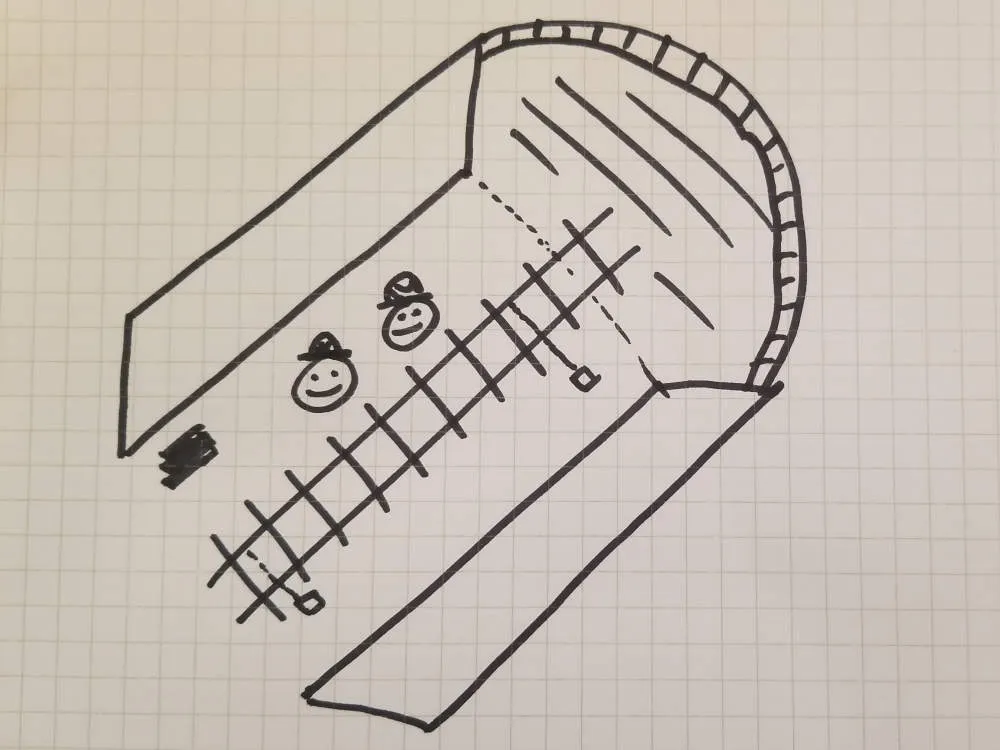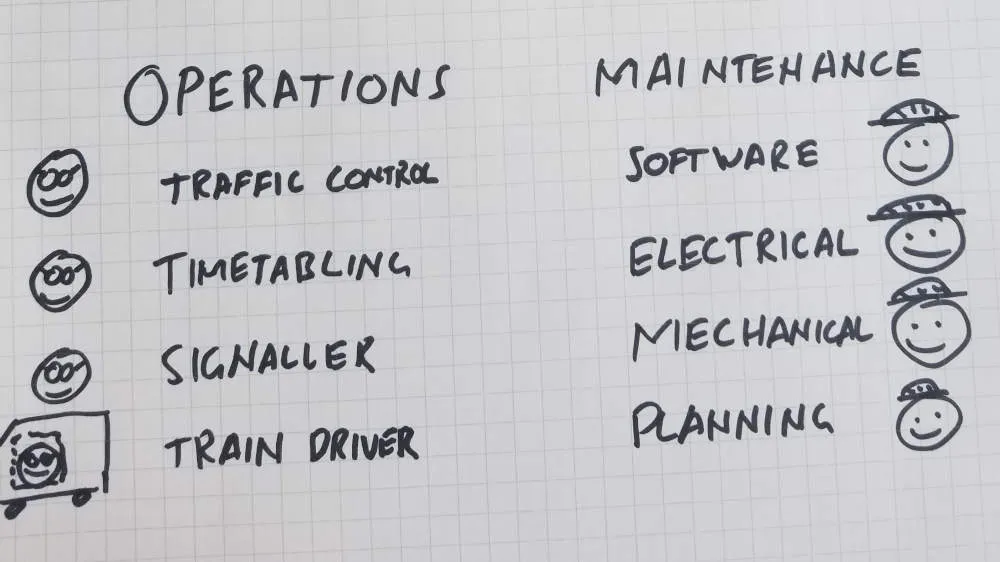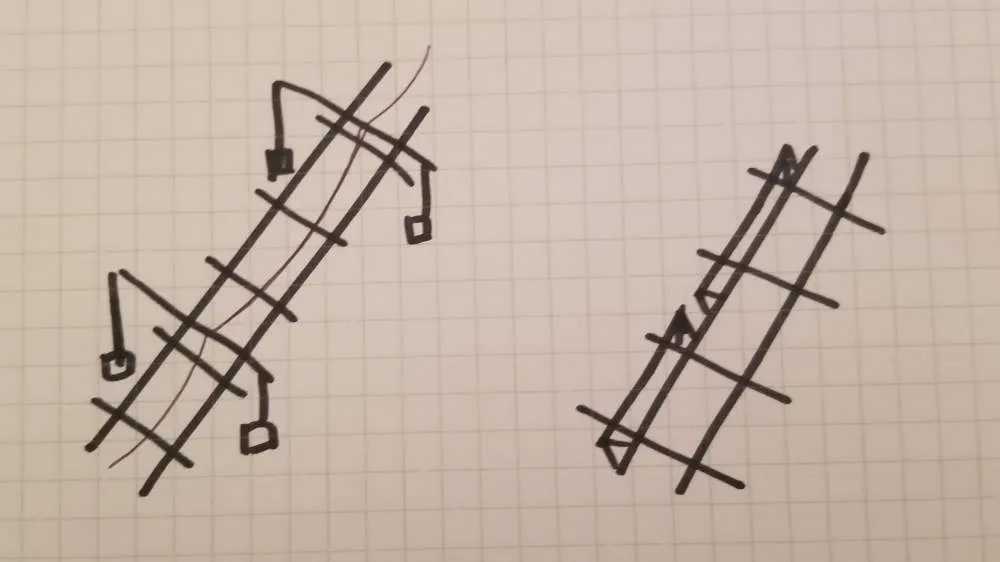5 Concepts to Learn When Starting a Career in Rail
Written by Chris, updated Jul 27 2019 in accordance with our editorial policy.
When I started in rail there was a steep learning curve. Lots of new terms, new ways of thinking, and new work to get my head around.
Here are 5 of the concepts that were fundamental to my building an understanding of the rail industry:
- Safety
- The Rail Corridor
- Possessions
- Maintenance, operation, construction, and design
- How trains are powered
Once I figured these out, I was ready to get started building my career.
 The rail corridor, where a lot of dangerous important work happens
The rail corridor, where a lot of dangerous important work happens
1. Rail Safety
Safety is important in every work place, so why is it special in rail?
Rail safety is important because the actions rail workers take can harm others, not only themselves.
Every workplace I’ve been to prioritises safety. In rail, we have to take that one step further. Not only do we need to watch out for our own safety, we need to make sure the actions we take do not put others in harm as well.
Keep our colleagues safe by making sure they’re not exposed to danger.
Keep the public safe by doing everything we can to prevent rail accidents.
I wrote previously about the common causes of derailments. Thankfully not many derailments are due to human error, and even on those that are it’s rare that people die. A strong safety culture and thinking about safety helps keep deaths due to derailment rare.
Unfortunately I still see cases where people die doing rail work. Being on the track is dangerous. Being around trains is dangerous.
Trains cannot stop quickly, unlike road vehicles. Even if a train driver sees maintenance or construction workers in the path of the train, there is nothing the driver can do to stop the train. It is important for workers on the track to look after themselves and their team and be aware of what that rail operator considers safe practices for working on the track.
2. Rail Corridor
The rail corridor is where we need to really pay attention to safety.
- Tracks and trains are in the rail corridor,
- Signalling equipment and train electrification are in the rail corridor,
- Construction materials and plant are usually kept in the rail corridor.
The rail corridor is the land allocated to the running of trains. This includes all the equipment, electronics, materials, and plant that help trains to run.
I’ve worked on lines where the rail corridor is marked by painted lines, by fences, or by being on a bridge or tunnel.
If we’re in the rail corridor, we need to be aware of where the trains are. Are we going to have to get out of the way of a train, how much warning are we going to have when a train is coming. Trains don’t stop, workers have to get out of their way.
3. Possession
Possessions are how we make sure our work isn’t going to be interrupted by a train.
Possessions are the blocking off of a section of train line such that no train can normally run into that section. Most possessions are used for construction and maintenance work on the train line.
Being able to work on the train tracks under a possession means that we don’t have to worry any more about getting out of the way for an oncoming train. We have more time to set up tools, more time to do the work, and more time to pack up again.
Possessions are also necessary for plant operation.
4. Maintenance, operation, construction, and design
These are the most important stages of a rail line’s life.
They are also where the jobs are in rail:
- Maintaining the equipment by replace, repair, fix faults, and diagnose problems,
- Operate the lines so that trains can carry passengers or freight,
- Construct the lines and systems that allow trains to run quickly and safely,
- Design how the systems work, what the bridges look like, and even the trains themselves.
 Where the jobs are, people who signal trains
Where the jobs are, people who signal trains
Maintenance
I think the solid rail careers of the future will be in maintenance.
Maintenance means:
- Fix faults, and diagnose what caused them,
- Take steps to prevent faults occurring,
- Repair and look after equipment.
Equipment can include train bogies, signalling computers, tracks and ballast, or platforms and stations.
Maintenance is behind the scenes, it’s not always visible to the public. A lot of maintenance happens at night when trains aren’t running.
The bigger a network, the more passengers and freight it carries, and the more trains there are all contribute to there being more maintenance to be done.
Maintenance jobs cannot be automated away, and they grow in number and responsibility as the complexity of the network does.
I took an in-depth look at what track maintenance is, check that out here: https://econstructioncareers.com/news-insight/track-maintenance
Operations
Rail operations are all the people involved in the supervising of trains running.
Automation is coming for rail operations jobs. This is what I do, I help rail companies automate their networks. We build systems that don’t need drivers, timetablers, signallers, or any of the other traditional ‘operations’ positions.
Automation makes rail operations safer and more reliable for the company and the passenger.
There are still great jobs in rail however. People in operations are still needed for customer service, oversight of the automated systems, and responding when things go wrong. I believe the growth of jobs though is in maintenance.
Construction
Building new train lines.
Construction is:
- Building the foundations that the train line sits on - dirt, concrete, bridges, tunnels;
- Laying the track, and the ballast the track sits on;
- Installing and testing all the systems that the trains rely on to run.
There is a vast variety of opportunity in building new rail lines. There are jobs for people who want to get their hands dirty, people who want to operate plant and machinery, or those who prefer to sit in an office.
Construction is also hard to automate, this makes it a great career to get in to.
Design
Design of a rail line happens before its built, modified as its being built, and then can be modified again once the line is built.
Design is mostly an office job, but there is site work involved as well. A good design process will involve getting the designers out of the office and onto the site to see how their designs are being built, and if there are any improvements they can make to design.
5. How trains are powered
Trains can be powered by:
- Diesel, where diesel is burnt to run an electric motor (trains were hybrid before cars),
- Overhead electricity, where the train is connected to a wire hanging above the train,
- Third rail electricity, where the train is connected to an addition rail (or two) underneath or beside the train for power.
Steam trains can still be seen on some rail lines, though rare compared to diesel or electricity.
When working on track it is important to know how the train is powered so that we can avoid electrocution.
 Overhead wiring and third rail electrification
Overhead wiring and third rail electrification
If the electricity for a train comes from underneath a train, we need to be careful of where we step. Yes you have boots on, but you never know what might go wrong. Avoid stepping on the electrified rail if you can help it; make sure it is safe to do so before you do.
If the electricity for a train comes from overhead, we need to be careful when operating plant. The crane operator needs to make sure the arm does not touch the overhead wiring. We also need to be careful of the structures that hold up the wire, in case the usual safety system insulating them fails.
On lines that service only diesel trains, we don’t need to worry as much about how the train is powered. There may still be other electric cables on these lines, but they’re less exposed and we’re less likely to get shocked from those.
A career in rail can be rewarding. We all need to get started somewhere. These are some of the concepts I found helpful and necessary to understand when I first started out.
Related articles:
- What is track maintenance: https://econstructioncareers.com/news-insight/track-maintenance
- 11 Industry Insider terms that can confuse new comers: https://econstructioncareers.com/news-insight/eleven-rail-terms